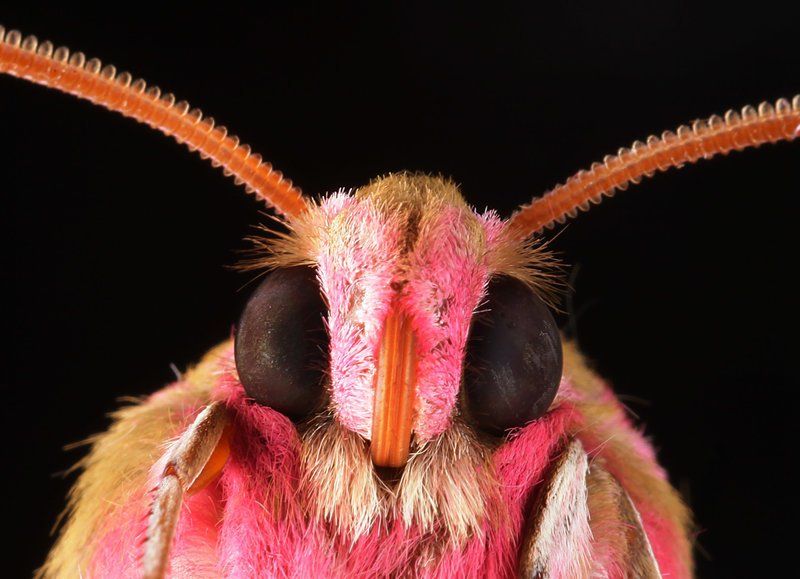
Deilephila elpenor, commonly called the elephant hawk-moth, has specialized eyes that don’t reflect light. Such moths inspired scientists to invent an anti-glare coating for smart screens.
Ullstein Bild/Getty Images
If you’re standing in the blazing sun struggling to read this on your cellphone, there may be some relief in sight.
And you’ll have a moth to thank.
The reason you have to find shade to read your phone is the way the light reflects off the screen. The reflection reduces contrast, washing out images.
And so “the lower the surface reflection, the better,” says Shin-Tson Wu, a professor of optics and photonics at the University of Central Florida.
Wu’s team of researchers has developed a film that coats cellphone screens to cut down the glare. Their inspiration? The eyes of a moth.
Most moths are nocturnal. Their eyes are covered in anti-reflective nanostructures that prevent light from reflecting off them when they fly at night and giving away their location — helping them to avoid predators.
Think of all the terrible photos of people with glowing red eyes. It’s like that, but a bit worse. Because instead of being embarrassed, you’d be eaten.
The researchers copied those light-trapping structures on the moth eyes for their film.
Current cellphone displays use a sensor to detect bright light, and then boost the screen brightness to improve readability. But that drains battery power. There are some anti-reflective screens on the market now, but they trap only certain wavelengths of light.
Adding the insect-inspired film to a cellphone made it four times easier to read the screen in sunlight, according to research published in the journal Optica. The new film is helpful even when you aren’t in the sun — screens also were 10 times easier to read in the shade.
It can also help keep your screen cleaner. “Some commercial anti-reflection films can be contaminated by fingerprints or dust,” Wu says. “In our film, we have a special treatment that has a self-cleaning effect,” owing to the film’s ability to repel moisture left behind by fingerprints. That moisture often traps dust and dirt on your screen.
Films that mimic moth eyes have already been used to increase the efficiency of solar cells.
Wu’s group wanted to find a way to use similar technology to develop anti-reflective film for phones. But the structures in the moth eyes are really small. The researchers had to come up with a way to quickly assemble the tiny structures to cover large screens, so they used self-assembling nanoparticles that mimic moth-eye structures to build a template that they could apply to any display surface, like a smartphone screen.
The tiny structures are also flexible. That means that the moth-inspired film could be used to coat foldable displays in the future.
But don’t expect to see these special films on your phone or tablet just yet. The authors still have to tweak the flexible film so that it is tough enough to withstand prolonged use. After all, moth eyes weren’t built to take the abuse that some cellphones get.
The moth-eye technology is far from the first invention inspired by nature. Velcro was inspired by burs from the burdock plant that stuck to a dog’s fur after a hunt. And sticky gecko feet inspired NASA scientists to start designing a robot that can walk around in open space on the International Space Station.
[“Source-npr”]
